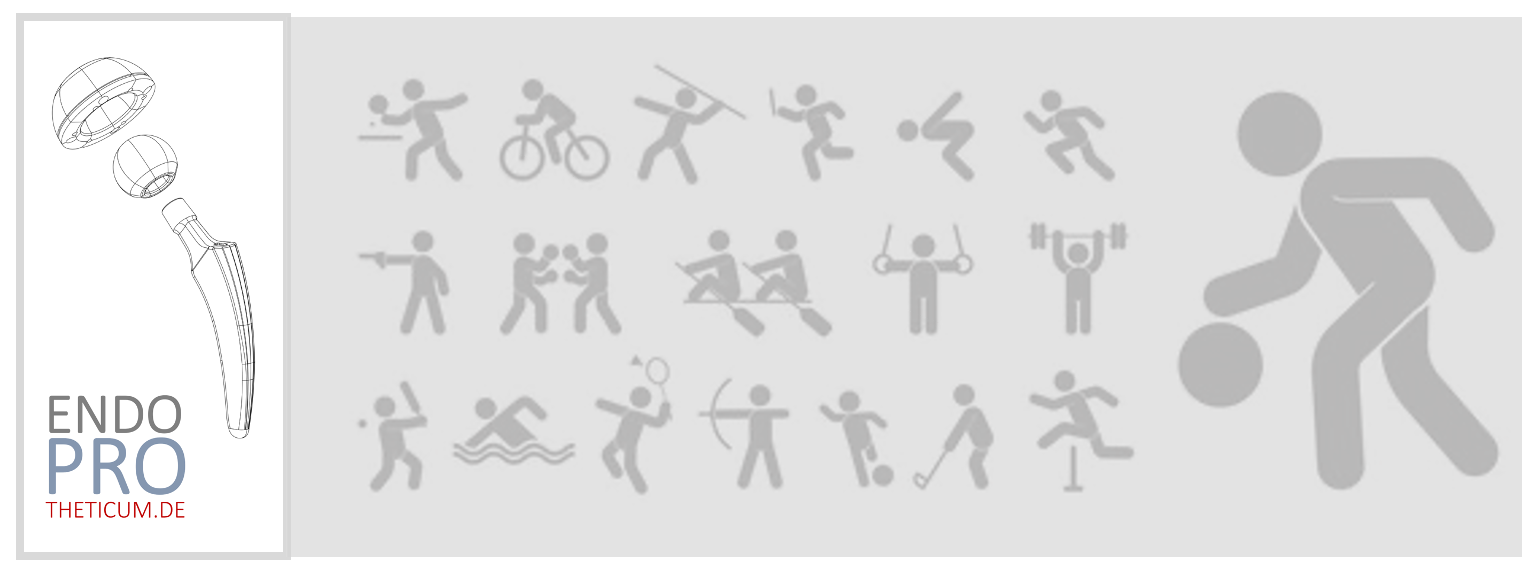Returning to sport after a short-shaft prosthesis: Tips for a successful recovery
Return to sport after short-shaft prosthesis

Returning to sport after a short-stem hip replacement marks an important milestone in your recovery and pursuit of an active lifestyle. Exercise can not only help strengthen the hips and improve mobility, but also improve overall well-being. However, for this return to be successful, there are some important steps and considerations required. In this blog post we will give you valuable tips for a safe and successful return to sport after a short stem prosthesis.
Consult your surgeon
Before you begin exercising after your short stem prosthesis, it is crucial to consult your treating surgeon. There are many different techniques, approaches and anchoring strategies. Not all of them allow for follow-up treatment or long-term resilience equally. Your doctor can best assess your individual situation, build on his or her experience and give you specific recommendations based on your recovery process and your personal needs. He can also give you instructions about the type and intensity of activities you can do.
Start slowly
After a short-shaft prosthesis, it is important to resume sport slowly and gradually. Start with light exercises and activities to mobilize your hips and strengthen your muscles. Avoid overexerting yourself or wanting too much too quickly, as this can lead to injury or complications.
Choose appropriate sports
Today, many sports are suitable and possible for people with a short-shaft prosthesis. If possible, choose sports that are gentle on your joints and do not put excessive strain on your hips. For example, swimming, cycling, hiking and yoga are often hassle-free options. Sports with abrupt movements or a high risk of falling are associated with increased risks. Here too, experience shows that more and more patients are able to practice such sports with a short-shaft prosthesis.
Pay attention to your body's reactions
As you begin exercising again, it's important to pay attention to your body's reactions. Be sensitive to hip pain, swelling, or discomfort and listen to your body. If you notice any discomfort, you should reduce the intensity of your activities and, if necessary, consult your surgeon.
Set realistic goals
Set yourself clear and realistic goals for your sporting activities after your short stem prosthesis. This may include gradually increasing exercise intensity, participating in certain events, or reaching a certain level of fitness. Setting goals can help you stay motivated and track your progress.
Conclusion
Returning to sport after a short stem prosthesis requires some patience, caution and thorough coordination with your surgeon. In principle, however, a lot is possible today. By following the tips above and adapting slowly, you can ensure that your recovery is successful and you can return to living an active and fulfilling life.
MAKE AN APPOINTMENT?
You are welcome to make an appointment either by phone or online .



























